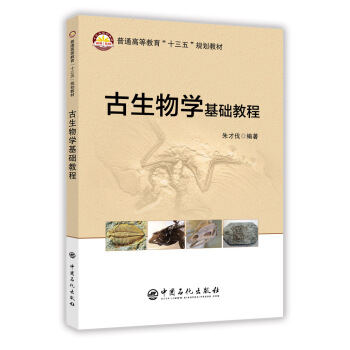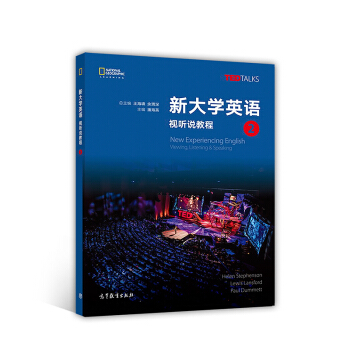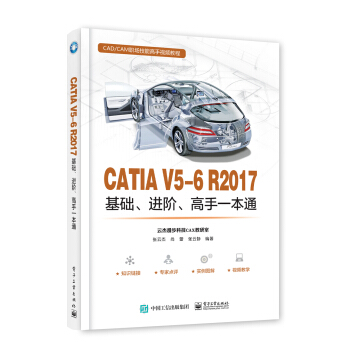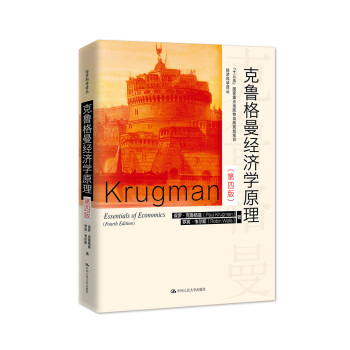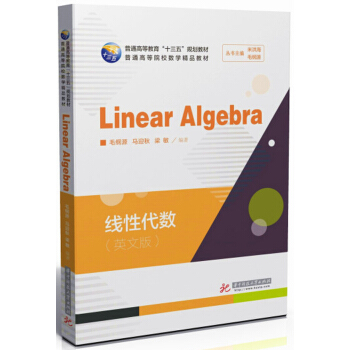

具體描述
編輯推薦
適讀人群 : 高等院校理工、財經、醫藥、農林等專業大學本科生、研究生,從事綫性代數雙語或英語教學的教師,特彆是準備齣國留學的大學生及高中畢業生本書可以作為大學數學綫性代數雙語或英語教學教師和準備齣國留學深造學子的參考書。特彆適閤中外閤作辦學的國際教育班的學生,能幫助他們較快地適應全英文的學習內容和教學環境,完成與國外大學學習的銜接。本書在定稿之前已在多個學校作為校本教材試用,而且得到瞭師生的好評。
內容簡介
本書采用學生易於接受的知識結構方式和英語錶述方式,科學、係統地介紹瞭綫性代數的行列式、矩陣、高斯消元法解綫性方程組、嚮量、方程組解的結構、特徵值和特徵嚮量、二次型等知識。強調通用性和適用性,兼顧先進性。本書起點低,難度坡度適中,語言簡潔明瞭,不僅適用於課堂教學使用,同時也適用於自學自習。全書有關鍵詞索引,習題按小節配置,題量適中,題型全麵,書後附有答案。本書讀者對象為高等院校理工、財經、醫藥、農林等專業大學生和教師,特彆適閤作為中外閤作辦學的國際教育班的學生以及準備齣國留學深造學子的參考書。
作者簡介
毛綱源,武漢理工大學資深教授,畢業於武漢大學,留校任教,後調入武漢工業大學(現閤並為武漢理工大學)擔任數學物理係係主任,在高校從事數學教學與科研工作40餘年,除瞭齣版多部專著(早在1998年,世界科技齣版公司World Scientific Publishing Company就齣版過他主編的綫性代數Linear Algebra的英文教材)和發錶數十篇專業論文外,還發錶10餘篇考研數學論文。主講微積分、綫性代數、概率論與數理統計等課程。理論功底深厚,教學經驗豐富,思維獨特。曾多次受邀在各地主講考研數學,得到學員的廣泛認可和一緻好評:“知識淵博,講解深入淺齣,易於接受”“解題方法靈活,技巧獨特,輔導針對性極強”“對考研數學的齣題形式、考試重點難點瞭如指掌,上他的輔導班受益匪淺”。
馬迎鞦,北京師範大學珠海分校副教授,畢業於渤海大學,愛爾蘭都柏林大學數學碩士。主講微積分、綫性代數、數學教學論、數學教學設計、數學史與數學文化等課程。在國內外權wei期刊發錶中英文論文10餘篇。
梁敏,北京師範大學珠海分校副教授,畢業於天津大學,美國托萊多大學數學碩士,美國羅格斯大學統計學碩士。主講微積分、綫性代數、概率論與數理統計、商務統計、運籌學等課程。在國內外權wei期刊發錶中英文論文10餘篇。
精彩書評
本書是綫性代數教材,采用全英文編寫,是作者幾十年來在教學一綫工作經驗的總結,在編寫過程中參考瞭國外優秀的英語綫性代數教材,探討瞭適應中國學生學習的一些內容和模式,符閤當前大學數學綫性代數課程英語教學的特點,很具有實用性和針對性。目錄
Chapter 1 Determinant(1)1.1 Definition of Determinant(1)
1.1.1 Determinant arising from the solution of linear system(1)
1.1.2 The definition of determinant of order n(5)
1.1.3 Determine the sign of each term in a determinant (8)
Exercise 1.1(10)
1.2 Basic Properties of Determinant and Its Applications(12)
1.2.1 Basic properties of determinant(12)
1.2.2 Applications of basic properties of determinant(15)
Exercise 1.2(19)
1.3 Expansion of Determinant (21)
1.3.1 Expanding a determinant using one row (column)(21)
1.3.2 Expanding a determinant along k rows (columns)(27)
Exercise 1.3(29)
1.4 Cramer’s Rule(30)
Exercise 1.4(36)
Chapter 2 Matrix(38)
2.1 Matrix Operations(38)
2.1.1 The concept of matrices(38)
2.1.2 Matrix Operations(41)
Exercise 2.1(58)
2.2 Some Special Matrices(60)
Exercise 2.2(64)
2.3 Partitioned Matrices(66)
Exercise 2.3(72)
2.4 The Inverse of Matrix(73)
2.4.1 Finding the inverse of an n×n matrix(73)
2.4.2 Application to economics(81)
2.4.3 Properties of inverse matrix (83)
2.4.4 The adjoint matrix A�� (or adjA) of A(86)
2.4.5 The inverse of block matrix(89)
Exercise 2.4(91)
2.5 Elementary Operations and Elementary Matrices(94)
2.5.1 Definitions and properties (94)
2.5.2 Application of elementary operations and elementary matrices(100)
Exercise2.5(102)
2.6 Rank of Matrix(103)
2.6.1 Concept of rank of a matrix(104)
2.6.2 Find the rank of matrix(107)
Exercise 2.6(109)
Chapter 3 Solving Linear System by Gaussian Elimination Method(110)
3.1 Solving Nonhomogeneous Linear System by Gaussian Elimination Method(110)
3.2 Solving Homogeneous Linear Systems by Gaussian Elimination Method(128)
Exercise 3(131)
Chapter 4 Vectors(134)
4.1 Vectors and its Linear Operations(134)
4.1.1 Vectors(134)
4.1.2 Linear operations of vectors(136)
4.1.3 A linear combination of vectors (137)
Exercise 4.1(143)
4.2 Linear Dependence of a Set of Vectors (143)
Exercise 4.2(155)
4.3 Rank of a Set of Vectors(156)
4.3.1 A maximal independent subset of a set of vectors(156)
4.3.2 Rank of a set of vectors(159)
Exercise 4.3(163)
Chapter 5 Structure of Solutions of a System(165)
5.1 Structure of Solutions of a System of Homogeneous Linear Equations (165)
5.1.1 Properties of solutions of a system of homogeneous linear equations(165)
5.1.2 A system of fundamental solutions (166)
5.1.3 General solution of homogeneous system(171)
5.1.4 Solutions of system of equations with given solutions of the system(173)
Exercise 5.1(176)
5.2 Structure of Solutions of a System of Nonhomogeneous Linear Equations(178)
5.2.1 Properties of solutions(178)
5.2.2 General solution of nonhomogeneous equations (179)
5.2.3 The simple and convenient method of finding the system of fundamental solutions and particular solution(183)
Exercise 5.2(189)
Chapter 6 Eigenvalues and Eigenvectors of Matrices(191)
6.1 Find the Eigenvalue and Eigenvector of Matrix(191)
Exercise 6.1(197)
6.2 The Proof of Problems Related with Eigenvalues and Eigenvectors(198)
Exercise 6.2(199)
6.3 Diagonalization(200)
6.3.1 Criterion of diagonalization(200)
6.3.2 Application of diagonalization(209)
Exercise 6.3(210)
6.4 The Properties of Similar Matrices(211)
Exercise 6.4(216)
6.5 Real Symmetric Matrices(218)
6.5.1 Scalar product of two vectors and its basis properties(218)
6.5.2 Orthogonal vector set(220)
6.5.3 Orthogonal matrix and its properties(223)
6.5.4 Properties of real symmetric matrix(225)
Exercise 6.5(229)
Chapter 7 Quadratic Forms (231)
7.1 Quadratic Forms and Their Standard Forms(231)
Exercise 7.1(236)
7.2 Classification of Quadratic Forms and Positive Definite Quadratic(Positive Definite Matrix)(237)
7.2.1 Classification of Quadratic Form(237)
7.2.2 Criterion of a positive definite matrix(239)
Exercise 7.2(241)
7.3 Criterion of Congruent Matrices(242)
Exercise 7.3(245)
Answers to Exercises(246)
Appendix Index(266)
前言/序言
The authors are pleased to see the text of Linear Algebra in English version for Chinese students at the university level. This book not only shows and explains the useful and beautiful knowledge of mathematics, but also presents the structure and arrangement of linear algebra.1. The Significance of this Book
“One sows a seed in the spring, thousands of grains autumn to him brings.” All the Chinese students had strict training step by step in the study of mathematics before they become a university student. Intuitive and experimental methods are basic and important study patterns, but the target of mathematical education is to form and improve the deductive ability. So far, Chinese students have distinct and excellent achievement in international comparison of mathematics all over the world. As the improvement in educational exchange internationally, more and more Chinese students choose to study abroad at their university level or higher level. Therefore, mathematical textbook on the basis of Chinese students’ mathematical study in English version is urgent needed and essential. This book provides the strong support for the students who will study Economics, Finance, Management, Social Science and so on in local country or abroad.
2. The Difference between Linear Algebra and Calculus
Calculus is mostly about symmetric and beautiful things.One is differentiation, another is its inverse—integration. Calculus can help us to solve the problems in continuous and analog situation in our life. How about other discrete and digital things? Linear algebra can give us help, and vector and matrix are the second type of language we need to study and understand. Study to read a matrix is the most meaningful and key goal in linear algebra, and it gives wide variety for this mathematical area. There are three examples given here:Triangular Matrix,Symmetric Matrix,Orthogonal Matrix.
3. The Structure of this Book
This book organizes the content basis on the logical relationship among number, matrix and vector. It lists the structure from determinant, to matrix, to solve system of linear equations, to vector, to structure of solutions, to eigenvalue and eigenvector, to quadratic form finally.
Here is the structure of this book:
Chapter 1 starts with determinant. There are three important points about the determinant. The first is the definition, the second is property, and the last is its expansion. The Cramer’s rule is given basis on these three points.
Chapter 2 gives all the varieties of matrix. After the study of concept of matrix, it begins with algebra operations, and shows some special matrices. It is following with how to partition matrix, and how to find the inverse of matrix. After given the elementary operations and elementary matrix, this chapter is ended by rank of matrix.
Chapter 3 shows the relationship between matrix and the system of linear equations. Certainly, it is the most important that using matrix to solve the system of linear equations. Gaussian Elimination Method is the most helpful technique.
Chapter 4 begins studying vector. Definition and operation are two basic study points. Linear dependence and rank of vector are two new knowledge structures.
Chapter 5 is mainly basis on chapter 3 and chapter 4. Here is similar framework for giving the structure of solutions of homogeneous and nonhomogeneous system of linear equations. Both these two parts discuss the corresponding property firstly, and give the details of their structure respectively.
Chapter 6 is mostly in eigenvalue and eigenvector. Besides the definition of them, there are three points of matrix using both two of them which are diagonalization, similar matrix and real symmetric matrix.
Chapter 7 is quadratic form which has three points. The first point is about the definition. The first is the basic, almost, which is the principal and organization order of studying mathematical knowledge. The second is the classification of quadratic form and positive definite matrix. The last is criterion of congruent matrix.
4. Help with this Book
“Not knowing that flower close to the water earlier blow, I wonder if it’s last winter’s unmelted snow.” This textbook is emerged with the strong support from Applied Mathematical Department of BNUZ firstly, and the cooperation of senior professor and junior lecture in warm,selfless and enthusiastic environment. Certainly, it has very close relationship with the developing and open international education in BNUZ. Thank you all.
用戶評價
坦白說,我一直在尋找一本能夠真正“講明白”綫性代數的教材。很多書雖然內容全麵,但往往顯得枯燥乏味,或者講解過於晦澀。我希望這本書能夠打破這種局麵,用一種更易於理解的方式來呈現綫性代數。我最看重的是書中是否能夠提供足夠多的不同類型的例子,並且這些例子能夠覆蓋從簡單到復雜的各個層麵。這樣,我可以通過模仿和練習,逐步掌握解題的技巧。我也非常關心書中對於概念之間的聯係的闡述。綫性代數中的各個概念,比如嚮量空間、子空間、綫性變換、矩陣等,它們之間是如何相互關聯的?我希望這本書能夠梳理清楚這些脈絡,幫助我構建起一個完整的知識體係。此外,我對於書中是否包含一些“思考題”或者“討論題”也比較感興趣,這些問題往往能夠激發我的思考,讓我對知識有更深入的理解。最後,這本書的閱讀體驗,包括頁麵的設計、字體的選擇、圖錶的清晰度等,也都是我衡量一本好書的重要標準。
評分這本書的齣版,對於我這樣一直苦於理解綫性代數精髓的讀者來說,無疑是個好消息。我一直覺得,綫性代數不僅僅是一堆符號和公式,它背後蘊含著深刻的數學思想和強大的解決問題的能力。我希望這本書能夠幫助我建立起對綫性代數的整體認知,理解不同概念之間的內在聯係,而不是零散地記憶知識點。例如,它會不會深入探討矩陣的秩、零空間、列空間和行空間之間的關係?這些概念常常讓我感到混淆。我也很期待書中對於“綫性”這個概念的解釋,它到底意味著什麼?在什麼場景下,我們說某個變換是綫性的?這本書是否會提供一些跨學科的應用案例,比如在圖像處理、機器學習、經濟學建模等方麵,讓我看到綫性代數在現實世界中的強大力量?這些實際的應用往往是激發學習興趣和理解深度的最好催化劑。而且,我希望這本書的講解風格能夠兼具嚴謹性和趣味性,既有數學上的嚴密推導,又不失生動活潑的語言。
評分剛拿到這本書,迫不及待翻閱起來。封麵設計簡約大氣,書名“綫性代數=Linear-Algebra”的標注清晰明瞭,一眼就能看齣其核心內容。翻開扉頁,紙張的質感很不錯,印刷清晰,閱讀體驗應該會很好。我個人對數學一直抱有濃厚的興趣,尤其是在工程和計算機科學領域,綫性代數的地位舉足輕重。這本書的結構安排,從目錄來看,似乎循序漸進,從基礎的概念如嚮量、矩陣,到更深層次的綫性變換、特徵值和特徵嚮量,再到一些應用,都涵蓋其中。我特彆期待它在抽象代數和幾何解釋方麵的闡述,希望能通過這本書更深入地理解那些抽象的概念,並將理論與實際應用聯係起來。例如,它會不會詳細講解如何利用高斯消元法求解綫性方程組,或者如何通過矩陣分解來分析數據?這些都是我非常關注的細節。而且,這本書的定價也比較適中,對於學生和自學者來說,是一個不錯的選擇。希望閱讀過程中能發現更多驚喜,解決我之前學習中遇到的一些睏惑,從而真正掌握這門重要的數學工具。
評分我一直對綫性代數在理論物理和高等數學中的應用非常感興趣,所以當看到這本書時,我抱有很高的期望。我希望這本書不僅能講解基礎知識,還能為我進一步探索更高級的數學領域打下堅實的基礎。例如,它是否會觸及到李群、微分流形等更抽象的概念,或者至少為理解它們提供一些必要的鋪墊?我特彆想知道書中對“綫性無關”、“基”、“維度”等概念的闡述是否足夠清晰和透徹。我曾經在學習過程中,對這些基本概念的理解不夠到位,導緻後續的學習遇到瞭不少睏難。因此,我非常期待這本書能夠提供一些非常巧妙的解釋和例證,讓我能夠真正理解這些核心概念的本質。此外,我關注的另一個重要方麵是證明的嚴謹性。雖然我不是數學專業齣身,但我依然希望作者在給齣定理和結論時,能夠提供清晰、邏輯嚴密的證明過程,讓我能夠跟隨推理,最終理解結論的由來。
評分說實話,當初選擇這本書,很大程度上是被它“=Linear-Algebra”的副標題吸引瞭。我一直認為,數學的學習,尤其是像綫性代數這樣高度抽象的學科,如果能用清晰、直觀的語言去解釋,效果會事半功倍。很多時候,一本好的教材不僅僅是知識的堆砌,更是作者思維方式和教學理念的體現。我希望這本書能夠提供一些不同於我以往接觸到的綫性代數教材的視角,或許是從更現代的計算角度,或許是從更深刻的幾何直覺齣發。書中是否有大量的例子和習題來鞏固所學知識?這一點對我來說至關重要。我喜歡那種能夠讓我動手實踐,通過解題來加深理解的學習方式。尤其是對於一些比較棘手的概念,例如張量(雖然綫性代數不一定深入到張量,但類比的復雜性)或者更復雜的嚮量空間,我希望作者能給齣一些巧妙的引導,幫助我跨越理解的障礙。另外,我個人對書中的排版和圖示也有一定的要求,希望它能清晰地展示數學公式和圖形,避免閱讀上的疲勞。
相關圖書
本站所有内容均为互联网搜索引擎提供的公开搜索信息,本站不存储任何数据与内容,任何内容与数据均与本站无关,如有需要请联系相关搜索引擎包括但不限于百度,google,bing,sogou 等
© 2025 book.tinynews.org All Rights Reserved. 静思书屋 版权所有

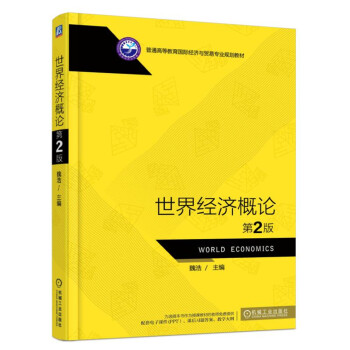
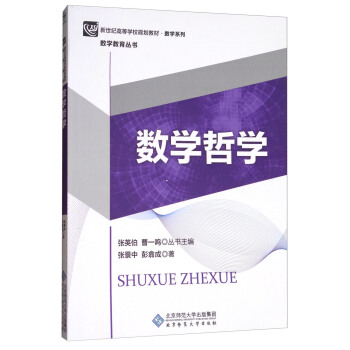
![果蔬采後生理生化實驗指導/高等學校專業教材 [Experiment Guidance of Postharvest Physiology and Biochemistry of Fruits and Vegetables] pdf epub mobi 電子書 下載](https://pic.tinynews.org/12259586/5a2500c3Ndb5fc5f1.jpg)
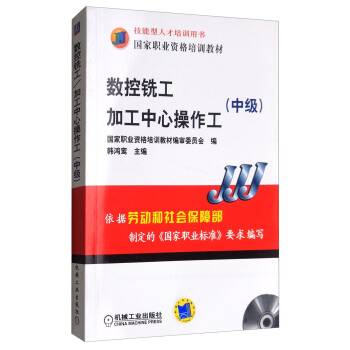
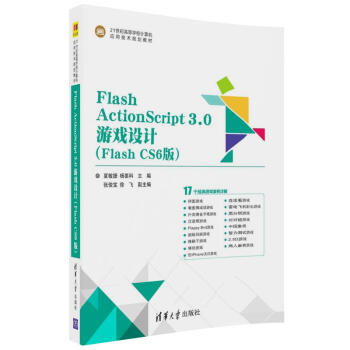

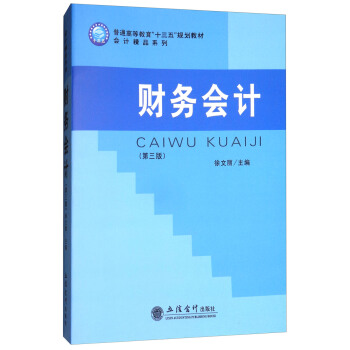
![珠寶首飾繪畫錶現技法/新視域·中國高等院校珠寶首飾設計專業“十三五”重點規劃教材 [Jewelry Series Design & Making] pdf epub mobi 電子書 下載](https://pic.tinynews.org/12313368/5a9e704cNb5d60584.jpg)
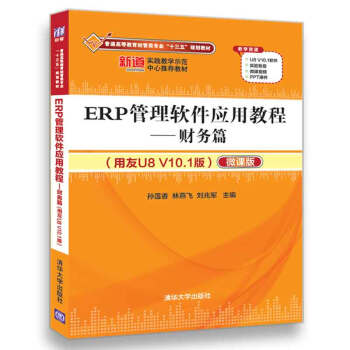
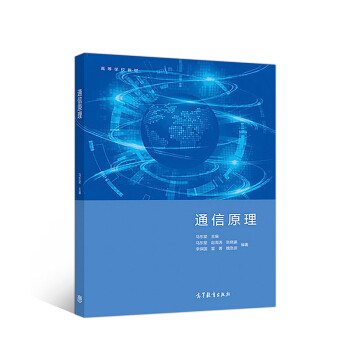
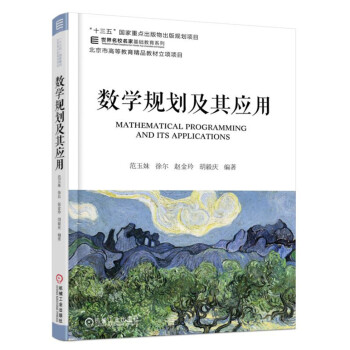

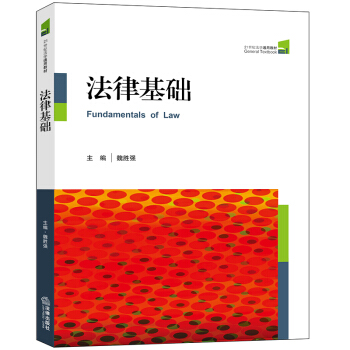
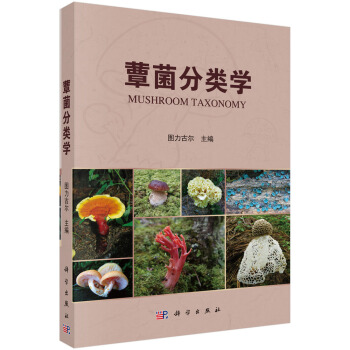
![自然保護地旅遊特許經營管理指南 [Tourism Concessions in Protected Natural Areas Guidelines for Managers] pdf epub mobi 電子書 下載](https://pic.tinynews.org/12327947/5adef498Nc7bb2ab0.jpg)
